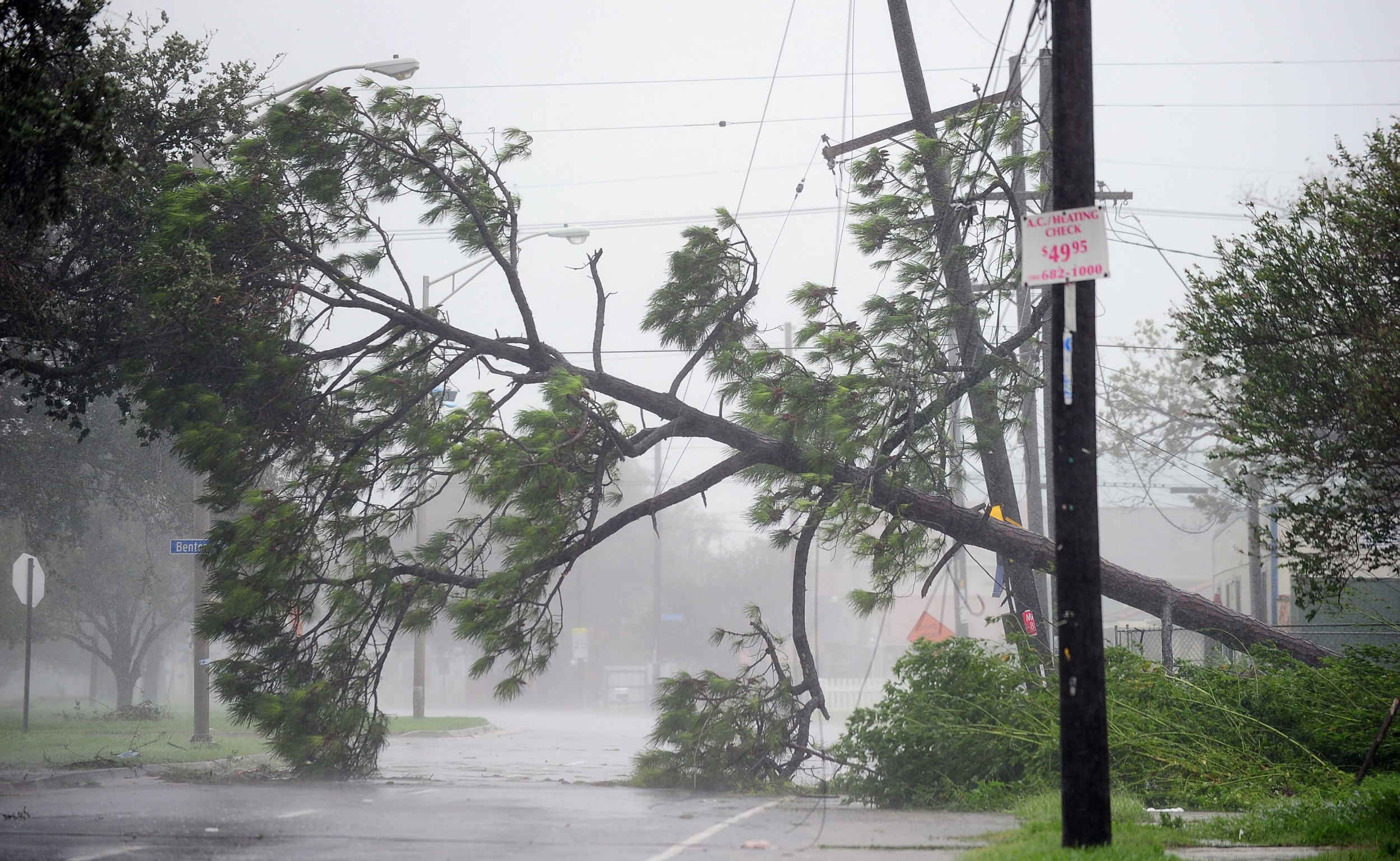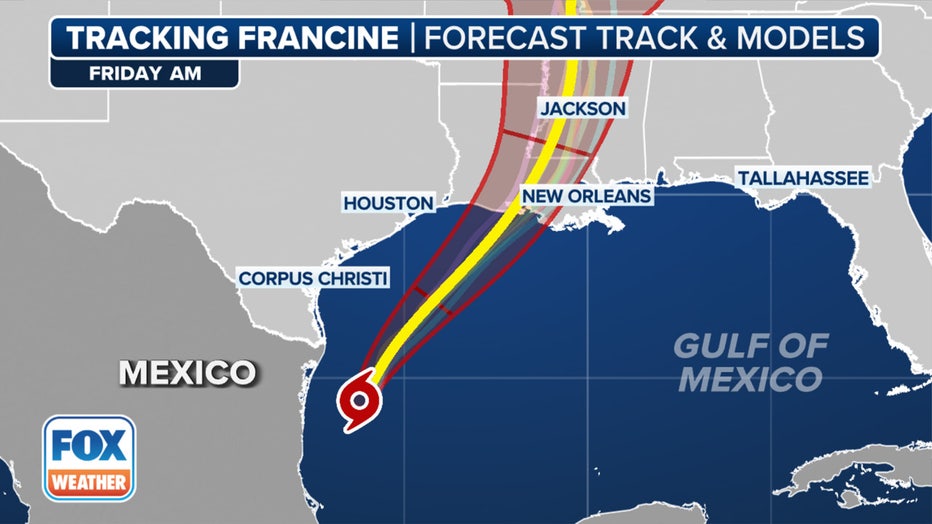Francine spaghetti model has become a crucial tool in meteorology, providing forecasters with valuable insights into weather patterns. This sophisticated technology uses multiple models to create an ensemble of potential outcomes, allowing meteorologists to predict weather conditions with greater accuracy. As one of the most advanced tools available, the Francine spaghetti model plays a pivotal role in modern weather forecasting.
The Francine spaghetti model is a term often used in meteorological circles to describe the ensemble of weather prediction models that provide a comprehensive view of weather patterns. By analyzing various models, forecasters can better understand the complexity of weather systems and deliver more accurate predictions. This article explores the intricacies of the Francine spaghetti model, its importance, and how it impacts our daily lives.
Whether you're a weather enthusiast, a professional meteorologist, or simply someone interested in understanding how weather forecasts are made, this guide will provide you with a deep dive into the world of Francine spaghetti models. We'll cover everything from the basics to advanced concepts, ensuring you have a thorough understanding of this critical tool in weather forecasting.
Read also:Unleashing The Indomitable Human Spirit Overcoming Challenges With Resilience
Understanding the Basics of Francine Spaghetti Model
The Francine spaghetti model is a meteorological tool that combines multiple weather models into a single visual representation. This approach allows forecasters to analyze various potential outcomes and make informed decisions based on the data presented. By understanding the basics of this model, you can appreciate its significance in modern weather forecasting.
What is a Spaghetti Model?
A spaghetti model is a visual representation of multiple weather prediction models displayed on a single chart. Each line on the chart represents a different model's forecast, creating a "spaghetti-like" appearance. This visual approach helps meteorologists identify patterns and trends in weather data, enabling them to make more accurate predictions.
Why is Francine Spaghetti Model Important?
The Francine spaghetti model is important because it provides forecasters with a comprehensive view of potential weather scenarios. By analyzing multiple models, meteorologists can identify common trends and outliers, allowing them to make more informed decisions. This approach is particularly useful in predicting severe weather events, such as hurricanes and tornadoes.
How Francine Spaghetti Model Works
The Francine spaghetti model works by combining data from various weather prediction models into a single visual representation. Each model contributes its own forecast, which is then displayed as a line on the chart. By analyzing these lines, forecasters can identify patterns and trends that may not be apparent when looking at individual models.
Data Sources for Francine Spaghetti Model
The Francine spaghetti model relies on data from a variety of sources, including:
- Numerical Weather Prediction (NWP) models
- Satellite imagery
- Radar data
- Surface observations
These data sources provide the necessary information to create accurate and reliable forecasts.
Read also:Scuba Steph Nude A Comprehensive Exploration
Process of Creating Francine Spaghetti Model
Creating a Francine spaghetti model involves several steps:
- Collecting data from various weather prediction models
- Processing the data to ensure consistency and accuracy
- Displaying the data on a single chart for analysis
This process allows forecasters to analyze multiple models simultaneously, improving the accuracy of their predictions.
Applications of Francine Spaghetti Model
The Francine spaghetti model has a wide range of applications in meteorology, from predicting everyday weather patterns to forecasting severe weather events. Its versatility makes it an invaluable tool for both professional forecasters and weather enthusiasts.
Forecasting Everyday Weather
For everyday weather forecasting, the Francine spaghetti model helps meteorologists predict temperature, precipitation, and wind patterns. By analyzing multiple models, forecasters can provide more accurate and reliable predictions, ensuring the public is well-informed about upcoming weather conditions.
Predicting Severe Weather Events
One of the most critical applications of the Francine spaghetti model is predicting severe weather events, such as hurricanes, tornadoes, and thunderstorms. By identifying common trends and outliers in the data, forecasters can issue warnings and advisories to keep the public safe during these potentially dangerous situations.
Advantages of Using Francine Spaghetti Model
There are several advantages to using the Francine spaghetti model in weather forecasting:
- Improved accuracy in predicting weather patterns
- Ability to analyze multiple models simultaneously
- Identification of common trends and outliers
- Enhanced ability to predict severe weather events
These advantages make the Francine spaghetti model an essential tool for meteorologists and weather enthusiasts alike.
Limitations of Francine Spaghetti Model
While the Francine spaghetti model is a powerful tool, it does have some limitations:
- Dependence on the accuracy of individual models
- Potential for conflicting forecasts between models
- Complexity in interpreting the data
Despite these limitations, the Francine spaghetti model remains a valuable asset in modern weather forecasting.
Comparison with Other Weather Forecasting Tools
The Francine spaghetti model is just one of many tools used in weather forecasting. Other popular tools include:
- Weather balloons
- Weather satellites
- Radar systems
Each tool has its own strengths and weaknesses, making it important for forecasters to use a combination of methods to ensure the most accurate predictions possible.
Future Developments in Francine Spaghetti Model
As technology continues to advance, the Francine spaghetti model is likely to become even more sophisticated. Future developments may include:
- Improved data processing techniques
- Incorporation of artificial intelligence and machine learning
- Enhanced visualization tools
These advancements will further improve the accuracy and reliability of weather forecasts, benefiting both professionals and the general public.
Conclusion
In conclusion, the Francine spaghetti model is a crucial tool in modern weather forecasting. By combining data from multiple models into a single visual representation, it allows forecasters to analyze weather patterns with greater accuracy and reliability. Whether predicting everyday weather or severe weather events, the Francine spaghetti model plays a vital role in keeping the public informed and safe.
We encourage you to explore this topic further and share your thoughts in the comments below. For more information on weather forecasting and related topics, be sure to check out our other articles on the site. Together, we can deepen our understanding of the world around us and prepare for whatever weather may come our way.
Table of Contents
- Understanding the Basics of Francine Spaghetti Model
- What is a Spaghetti Model?
- Why is Francine Spaghetti Model Important?
- How Francine Spaghetti Model Works
- Data Sources for Francine Spaghetti Model
- Process of Creating Francine Spaghetti Model
- Applications of Francine Spaghetti Model
- Forecasting Everyday Weather
- Predicting Severe Weather Events
- Advantages of Using Francine Spaghetti Model
- Limitations of Francine Spaghetti Model
- Comparison with Other Weather Forecasting Tools
- Future Developments in Francine Spaghetti Model
- Conclusion


